In our family, we believe in using as many natural ingredients as possible - and when the question came up for an alternative to sunscreen in the form of a natural sun protection product, vegetable oils came to mind.
So the question was whether all-natural vegetable oils can be used as a sunscreen and protect against the sun's dangerous UV rays.
Because as everyone knows...
As soon as summer shows its happy and shiny face in this country, many of us rush out into the sun and soak it up like it's the last thing on our bucket list. But watch out!
In particular, you should be aware of what you should do if you utilise natural oils like Argan, Jojoba and all the other pure oils we sell here at CHLEOPATRA.
You don't have to avoid the sun, as long as you act sensibly and follow some good advice. Read more about what to do when it comes to vegetable oils in the sun.
- Introduction
- Can vegetable oils be used as sun protection?
- What is SPF? - And how long does sunscreen last?
- Using pure oils in the sun
- Natural sun protection
- Your oils should avoid the sun - but you can go out in the good weather...
- Sun protection factor
- Oils with natural SPF
- SPF OILS with a factor below 10
- Sun protection products are divided into categories
- How to calculate the sun protection factor in per cent
- The sun's rays
- But isn't it dangerous to use oil?
- Once you've got a sunburn... After sun
- UV damage repair oils
- Stay safe in the sun - Remember to look after yourself!
- Frequently asked questions
Introduction
Sunscreen is an essential part of every summer wardrobe. It protects our skin from the harmful effects of the sun's rays and reduces the risk of skin cancer. But with so many products on the market, it can be difficult to choose the right sunscreen for you. And if you're concerned about chemicals and want to use natural products, it can be even more challenging. In this article, we'll discuss everything you need to know about natural sunscreen, including what it is, why it's important, what to look for and how you can make your own natural sunscreen.
Can vegetable oils be used as sun protection?
The short answer is yes, some individual oils do contain a natural SPF. However, the longer answer is that unlike a commercial sunscreen, oils cannot be guaranteed to have a specific SPF.
This makes it possible to use completely clean vegetable oils intended for cosmetic use as protection against the sun's dangerous rays. Raspberry seed oil in particular is known to contain up to 28 SPF. However, it should still only be used as an alternative and not necessarily as a replacement.
Learn more about the different oils that contain all-natural sun protection factor here.
What is SPF? - And how long does sunscreen last?
SPF stands for "Sun Protection Factor" and is a measurement of how well a sunscreen protects your skin from the sun's harmful UV rays. The higher the SPF number, the better the protection from the sun.
The SPF number calculates the amount of time you can spend in the sun without burning, compared to the time it would normally take for your skin to burn without sun protection. For example, an SPF 30 means that you can stay in the sun 30 times longer than you normally could without getting burnt.
It's important to choose a sunscreen with a broad-spectrum SPF, meaning it protects against both UVA and UVB rays. UVA rays are responsible for skin ageing, while UVB rays cause burns. Both types of rays can also cause skin cancer, so it's important to protect against both types.
When using sunscreen, remember to apply it at least 15 minutes before going out in the sun and reapply at least every 2-3 hours or after swimming or sweating. While a high SPF number can provide good protection, no sunscreen can provide 100% protection from the sun's rays, so it's also important to cover up with sunglasses, a hat and protective clothing when out in the sun.
Using pure oils in the sun
Don't be fooled by the sun's rays. Even when it's cloudy, the sun's rays can actually damage your skin. So you should definitely take sun protection seriously.
Read on to learn more about how to handle oils in interaction with the sun and what else you should be aware of when you're out and about enjoying the good weather.
How to make your own natural sunscreen
If you want to avoid chemicals and make your own natural sunscreen, it's actually quite easy. Here's a step-by-step guide to making your own sunscreen at home:
- Melt 1/4 cup shea butter and 1/4 cup beeswax in a double boiler over low heat.
- Add 1/4 cup coconut oil and mix well.
- Remove the mixture from the heat and add 2 tbsp zinc oxide powder and 1 tsp vitamin E oil.
- Stir well until all the ingredients are mixed.
- Pour the mixture into a clean, dry container and allow to cool.
- Once the sunscreen has cooled and set, it is ready to use.

How to apply natural sunscreen
When using natural sunscreen, it's important to apply it correctly for the best protection. Here are some tips for applying natural sunscreen:
- Apply the sun cream to clean, dry skin at least 15 minutes before going out in the sun.
- Use a sufficient amount of sunscreen to cover your entire body.
- Repeat the application every 2-3 hours or after swimming or sweating.
- Wear sunglasses, a hat and protective clothing to further protect yourself from the sun.
Natural sun protection
Natural sun protection is an important part of protecting your skin from harmful UV rays from the sun. While conventional sunscreens can contain harmful chemicals, natural sunscreens can protect your skin in a healthy and sustainable way.
There are many natural ingredients that are known for their sun-protective properties. Zinc oxide and titanium oxide are two of the most common ingredients in natural sunscreens. These minerals act as physical sun filters by reflecting the sun's rays away from the skin. They are also mild and unlikely to cause skin irritation or allergic reactions.
In addition, natural ingredients such as green tea extract, shea butter and coconut oil can also help protect your skin from the sun. Green tea extract has antioxidant and anti-inflammatory properties and can help reduce sun damage to the skin. Shea butter contains natural oils that can help soften and moisturise the skin, while coconut oil is known for its antibacterial properties and can help protect against sun damage.
When looking for natural sun protection, look for sunscreens that are broad-spectrum and have a high SPF factor. It's also important to avoid sunscreens that contain harmful chemicals such as oxybenzone, avobenzone, octisalate and homosalate, which can cause skin irritation and allergic reactions.
If you want to avoid chemicals and make your own natural sun protection, it's actually quite easy. You can make your own sun protection at home using natural ingredients like zinc oxide powder, coconut oil and shea butter. Just make sure you apply it correctly and reapply every 2-3 hours or after swimming or sweating.
Natural sun protection is not only good for your skin, but it's also good for the environment. By choosing natural sunscreens and avoiding harmful chemicals, you can protect yourself and the planet at the same time.
Your oils should avoid the sun
- But you can go out in the good weather...
Firstly, you should never leave your oils out in the hot sun. Firstly, oils don't like the extreme heat that the sun puts on them and secondly, sunlight can also damage the oils, making them both rancid and less rich in their good content.
As a person, you don't have to hide - even if you're covered in oil. BUT... you should familiarise yourself with how the sun's dangerous rays and sun protection work first.
Sun protection factor
SPF stands for Sun Protection Factor and is a value assigned to various products that can be used to protect against the sun's dangerous rays.
- SPF is a unit of measurement that is determined by measuring how long it takes for the skin to become sunburnt (so-called minimum pinking time)
- Sun protection factor only indicates the degree of UV-B protection
- Pinking time: e.g. 15 min * SPF 15 =3.45 hours
- You should use about a handful of sunscreen (approx. 40 ml) to cover a full-grown person's body and about a teaspoon for the face.
- A sunscreen should be applied 20 minutes before sunbathing.
Danes generally apply far too little sunscreen, which reduces the protective effect of the sunscreen's factor number. For example, if you apply a sun cream with a sun protection factor of 30 but only a thin layer, the protection is reduced to a factor 4.
SPF 30 means that the body can tolerate 30 times more UV radiation when using the cream, but it does not mean that you can spend 30 times more time in the sun, as the sun's UV radiation varies throughout the day.
Major skincare manufacturers have their products tested for an actual SPF, which they then have to advertise on their products. This testing is done in a lab and obviously costs the manufacturer a lot of money.
Smaller companies like CHLEOPATRA do not have this option for purely financial reasons and therefore our products will not contain information about this. However, that doesn't mean it's completely out of the question.

Oils with natural SPF
Some oils actually contain a natural SPF that consumers can take into consideration, but you can't rely on them as they are not tested and therefore not documented.
Raspberry seed oil
Raspberry seed oil is highly moisturising and softening. It contains high amounts of alpha and gamma tocopherols (Vitamin E), polyphenols and vitamin C.
It is also rich in vitamin A and contains up to 83% omega-3 and omega-6 fatty acids. It is said to have a relatively high SPF of 28-50.
Vegetable oils
Jojoba Oil
Jojoba is a desert plant used by Native Americans and Mexicans for food, medicine, skincare and rituals.
Jojoba oil is effective as a moisturiser for dry skin and contains a natural plant chemical called myristic acid, which provides limited sun protection. Jojoba oil has a low SPF 4.
Vegetable oils
Macadamia Oil
Macadamia nuts are a good source of magnesium, iron, phosphorus, potassium and vitamin E.
Macadamia nut oil also contains a natural plant chemical called cinnamic acid, which provides a variable SPF level of 6.
Vegetable oils
Avocado Oil
This fruit is highly respected by the Aztecs in Mexico for its high nutritional content. Avocado oil is rich in vitamins A, B, D and E, fatty acids and lecithin.
Avocado oil has a fast-acting ability to be absorbed by skin tissue and infuses the skin with emollients that can moisturise, nourish and regenerate the epidermis or outer layer of skin. Avocado oil has an SPF 4.
Vegetable oils
Sea Buckthorn Oil
The fruit or berries of the sea buckthorn plant are an unrivalled natural source of vitamins A and E, carotenes and flavonoids.
They are also rich in several other vitaminsincluding B1, B2, K and P, as well as in more than two dozen microelements. Sea buckthorn oil is known to reduce the harmful effects of the sun's radiation.
The restorative effect of sea buckthorn oil may be partly due to the high content of fatty acids and essential fatty acids, carotenes, tocopherols and phytosterols, all important for maintaining healthy skin. The content of sea buckthorn berry oil fatty acid is 80 - 95%.
The high amounts of fatty acids found in sea buckthorn oil is oleic acid and linoleic acid. It has an SPF 2-4.
Vegetable oils
Wheat germ oil
*NB: The above is not documented and therefore cannot be used as a fact, but only as an indicator.
Please note that the above SPF is not based on actual evidence. We therefore recommend that you use approved products for sun protection and only use the oils as a good addition.
Overview of natural oils containing natural SPF (English)
| Cosmetic oil | SPF*. |
| Almond oil (Almond oil) | 5 |
| Avocado oil (Avocado oil) | 4 - 15 |
| Yellow castor oil*. Carrot seed oil | 38 - 40 |
| Castor oil (Castor oil) | 6 |
| Coconut oil (Coconut oil) | 2 - 8 |
| Jojoba oil (Jojoba oil) | 4 |
| Macadamia oil (Macadamia oil) | 6 |
| Olive oil Olive oil | 2 - 8 |
| Raspberry seed oil (Raspberry seed oil) | 28 - 50 |
| Sea buckthorn oil (Sea buckthorn oil) | 2 - 4 |
| Sesame seed oil Sesame Seed Oil | 2 - 4 |
| Shea butter (Shea butter) | 3 - 6 |
| Soya bean oil (Soybean oil) | 10 |
| Wheat germ oil (Wheatgerm) | 20 |
| Hemp seed oil (Hemp Seed Oil) | 6 |
*Contrary to popular belief, carrot seed oil has not been proven to have any confirmed SPF.
SPF OILS with a factor below 10
SPF can be misleading
The SPF sun protection factor system is a simulation of sun exposure to the skin under laboratory conditions. It is a biological test (in vivo) that involves volunteer subjects applying sunscreen and being exposed to UV rays, after which the SPF value is calculated. It is a conversion of the time it takes for the subjects to turn red without sun protection compared to the reddening of the skin with the sun protection product applied. As SPF is a biological test, it is inevitable that there will be some variation from one test to another due to the differences in skin and skin type. However, the test includes a statistical calculation of the test results that indicates the acceptable variation. It is important to use products with an SPF that is appropriate for your skin type and location. No product protects 100%, so there are no sun blockers.
SPT - www.spt.dk
Sun protection products are divided into categories
Sun protection factors are measured in a laboratory. They are an indication of how long you can stay in the sun without sunscalding your skin. When it comes to sunburn, researchers measure for four skin types:
- Type I - very pale, fair skin, usually people with blonde or red hair. Type I skin can only remain unprotected in the sun for 5-10 minutes before it becomes damaged.
- Type II - slightly darker skin, usually with blonde to brown hair. Type II skin can remain unprotected in the sun for 20 minutes before sunburn begins.
- Type III - darker still, often with an olive complexion. Type III skin can stay in the sun for 30 minutes before your skin burns.
- Type IV - darkest skin types. Type IV skin can stay in the sun for 40 minutes before the skin starts to sunburn.
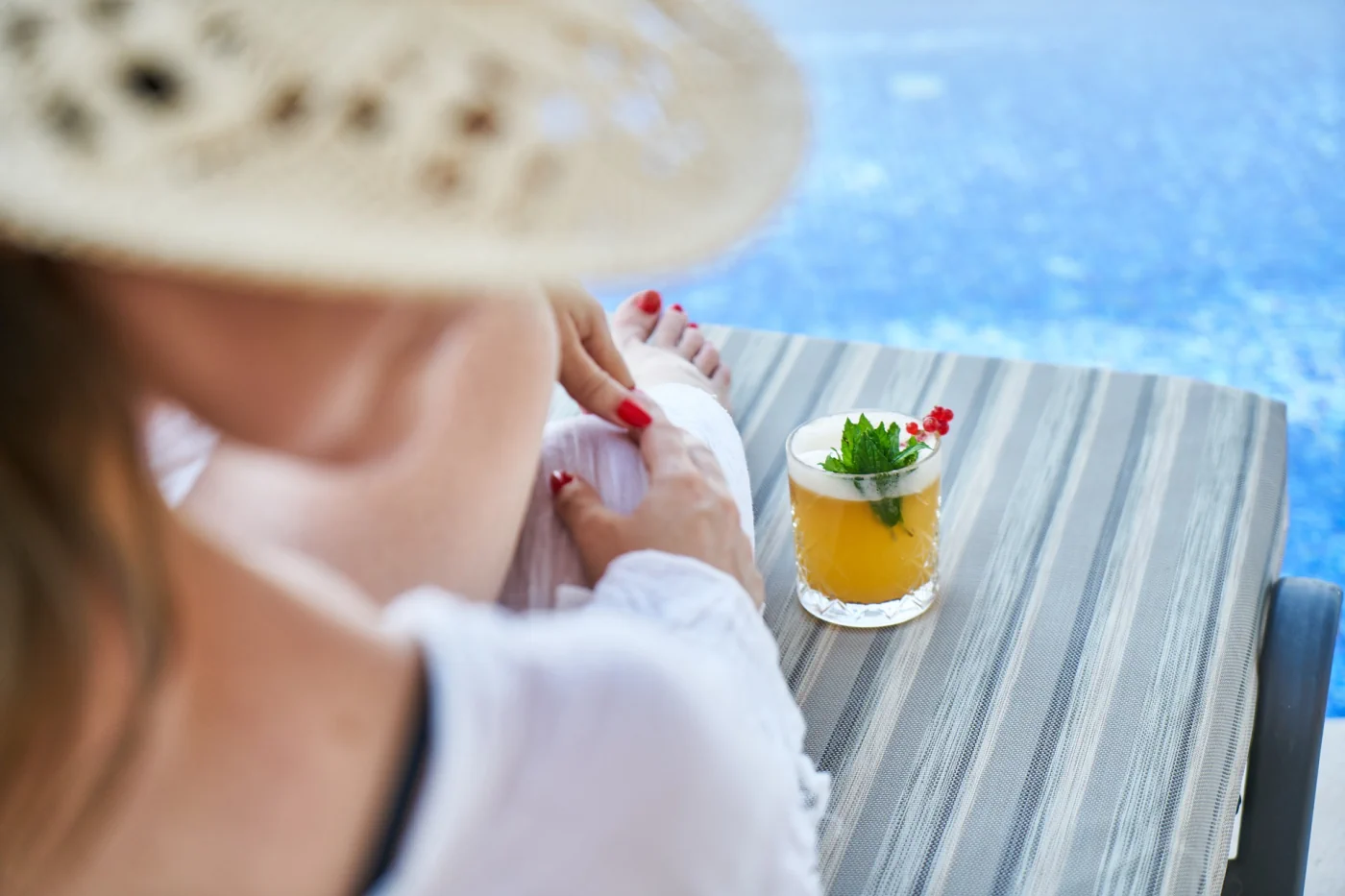
How to calculate the sun protection factor in per cent
(SPF-1)/SPF=%
This is the result for SPF 30 and SPF 60, respectively:
- SPF 30: (30-1)/30 = 96.6% protection
- SPF 60: (60-1)/60 = 98.3% protection
So there is only a difference of 1.7% and not as much as you might think - twice as much.
An SPF rating gives an indication of how much longer you can stay in the sun. For example, a product with an SPF of 15 will allow someone with type II skin to stay in the sun 15 times longer before they start to burn - or a total of 300 minutes (5 hours).
But again, this is not a reality as it is based on laboratory conditions and therefore only a simulation. The sun's rays can vary greatly, so an SPF of 15 does not necessarily give 15 times as much time in the sun for a person with type II skin. You can therefore only use this SPF interpretation as a guideline.
- Low protection: SPF 6 - 10
- Medium protection: SPF 15 - 20 - 25
- High protection: SPF 30 - 50
- Very high protection: SPF 50+
The sun's rays
- UV-A The rays are the least energy-rich, but they reach the deepest into the skin where they break down the elastic fibres. It is because of these rays that sun worshippers often develop rough, scarred skin with deep wrinkles.
- UV-B The rays are more energetic and it's mainly these rays that scald the skin. These are the rays that SPF sun protection products protect against.
- UV-C rays are the most energetic and the most dangerous to the skin. Fortunately, they are filtered out by the ozone layer and don't reach the ground. What happens once we've worn out the ozone layer is anyone's guess.
But isn't it dangerous to use oil?
It's natural to think that fats - such as vegetable oils - act like grease on a frying pan, and applying vegetable oils to your body before going out in the sun is the equivalent of coating your duck in fat and popping it in the oven.
If you slather yourself in oils and go out in the baking sun straight away, you may well risk this effect. However, the difference between natural vegetable oils and fats such as magarine is that magarine is not absorbed by the skin, but simply sits on top of it.
Vegetable oils, on the other hand, are absorbed by the skin within a few minutes, providing a protective effect on par with the skin's own sebum.
A good homesteading advice
A great tip to get the most protection while out in the sun is to NOT bathe before going outside for an extended period of time.
One of the things that happens when you take a shower is that you wash off your skin's natural oil production, which helps protect the skin from the sun's rays, among other things.
The human sebum actually has a natural SPF of 6-8. It would therefore be foolish to remove it before sunbathing.
Furthermore, this trick can also be used when you return from sunbathing, where it's a good idea to wait an hour or so before showering.
Your body needs some time to finalise the processing of vitamin D and the UVA/UVB rays it has received.
Other tips
- Always apply your sun protection product thoroughly - it's better to apply too much than too little.
- Always test - never take the chance to see how long it works. The effect is often only realised much later, by which time it will be too late.
- Always seek professional help - especially when it comes to protecting your child's skin.
- Apply protection well before you head out into the sun.
Once you've got a sunburn... After sun
Then a great tip to apply is Aloe Vera Gel by massaging it into the affected area.
Aloe Vera Gel has amazing healing, moisturising and anti-inflammatory properties that make it the ideal base for treating sunburn, but if you don't have any, you can of course use a lotion or cream base instead.
It's best if you have an Aloe vera plant. Here you can cut off a piece and let the wet inside act as a cooling and soothing effect directly on the sun damage. Make sure to cut any sharp edges off the plant before using it.
Alternatively, you can also use various vegetable oils. They can be a great addition to a properly formulated sunscreen and can also help to soothe the skin and aid regeneration after sun exposure.
Prolonged exposure to strong sunlight exposes us to harmful UV rays. UV rays are harmful to the skin, especially UV-B rays. Over time, these rays lead to skin damage, which is characteristic of accelerated ageing.
The signs of this ageing on the skin are wrinkles and sun spots. Apply passion fruit oil directly on these areas. The nutrients in the oil can help the skin recover from sun damage.
UV damage repair oils
Of course, once the damage is done, it's important to get out of the sun.
You can take a cold shower, but you should avoid ice cubes.
UVB rays are the biggest cause of sunburn and skin redness.
UVB is strongest between 10am-4pm, April to October.
The natural ingredients below will help:
- Penetrate the skin's surface
- Contribute to photo ageing
Stay safe in the sun - Remember to look after yourself!
Always remember to look after your body. Your skin is your body's largest organ and much of it is exposed to the sun, both summer and winter.
Especially in summer, the sun's rays are powerful and our Nordic skin is far from used to the intense rays, so protect your skin.
Morten Pauch
CEO & Oil Magician
One of two life souls. Daily driver on the webshop and with a keen interest in the small details. I started chleopatra.dk in 2013 - at the request of my dear wife Liezel. The idea was simple. To create a webshop selling pure vegetable oils for skin and hair. I soon realised that I didn't know much about these products. Fortunately, that has changed, as I have continuously educated myself, researched topics and continue to stay informed on the topic of natural skin and hair care products.
As a result, I now have a wealth of knowledge about oils, butter, clay and many other natural ingredients for healthy skin care. Oils and pure cosmetics have truly got under the skin. Born without much thought about natural cosmetics and hygiene, but have been opened up to this new world that really dates back to the earliest times. It's this new interest in facts and details that you'll find and learn more about in my articles here on the blog and when you call us.
Frequently asked questions
- Can natural sunscreen be as effective as conventional sunscreen? Yes, when used correctly. But you should know which rays you are protected against and how long it is effective.
What ingredients should I avoid in my sunscreen? Avoid oxybenzone, avobenzone, octisalate and homosalate, all of which can cause skin irritation and allergic reactions.
Are natural sunscreens sustainable? Yes, as they often use natural and eco-friendly ingredients and are packaged in recyclable or biodegradable materials.
Can I make my own natural sunscreen? Yes, it's easy to make your own sunscreen at home using natural ingredients.
How do I know if my sunscreen is natural? Read the label to see the ingredient list. Natural sunscreens will contain natural ingredients and avoid harmful chemicals.
How often should I apply sunscreen? Apply sunscreen at least every 2-3 hours or after swimming or sweating.
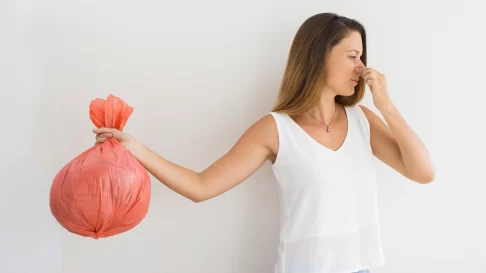





















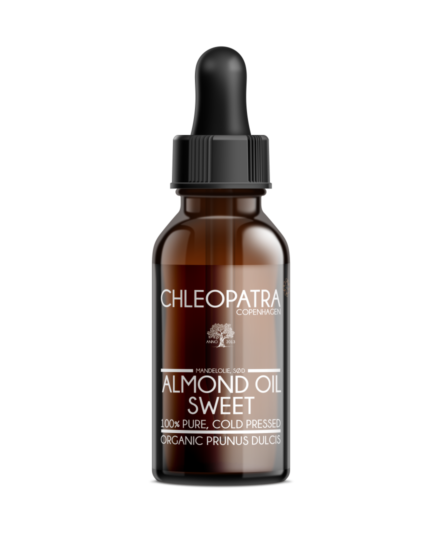


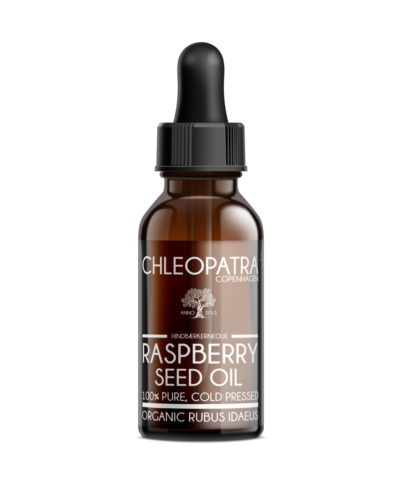


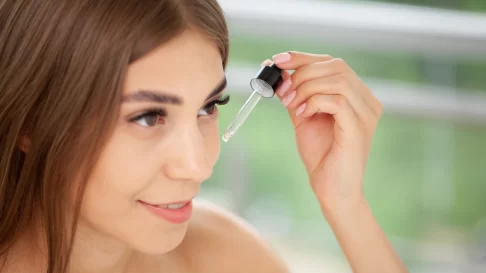




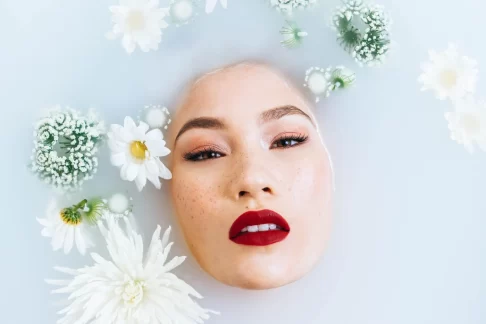









I am searching for oil for wrinkles under the eyes, so what can it be recommended! Thanks
Hi Rugaya,
Thank you for the question.
For wrinkles under the eyes, I would recommend prickly pear seed oil:
https://www.chleopatra.dk/butik/figenkaktus-froe-olie/
It contains a high amount of natural vitamin E, penetrates quickly into the skin and leaves it silky smooth.
which oil is best for acne, hemp seed or tea tree oil
Hi Noor,
Tea tree oil is an essential oil and is therefore recommended to be diluted with a vegetable oil, which hemp seed oil is. So, if you add your questions together, you have the answer. Tea tree oil mixed with hemp seed oil.
However, we always recommend our tamanu oil for pimples and impure skin as it is often more effective, but it all depends on your skin and your preferences. The aroma of hemp seed oil is very forest-nature-like, whereas tea tree is more bark-resin-like and tamanu oil is something special (certainly not everyone likes it, despite its effectiveness).
You can also choose to use just the hemp seed oil and see how your skin responds to it. In other words, there is no one answer to your question. It's all about trial and error to see what your skin likes best, but as we said, tamanu oil is often effective against pimples and blemishes.
Hope this helps you get back on track.